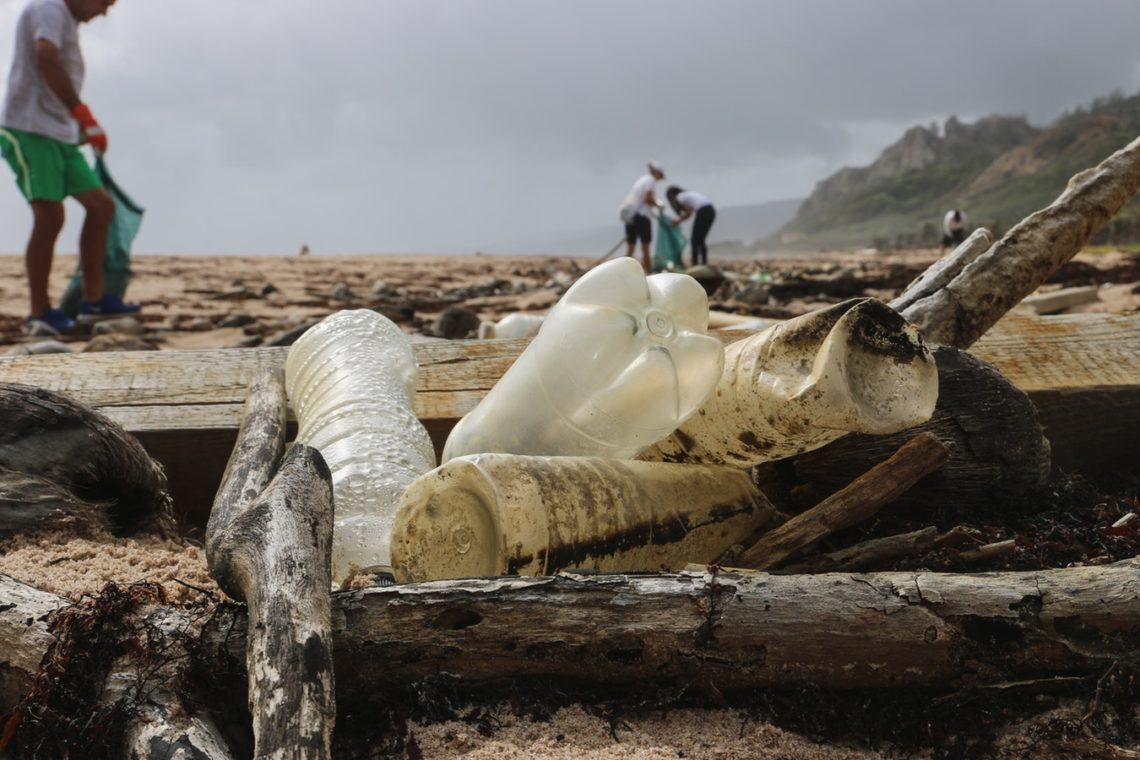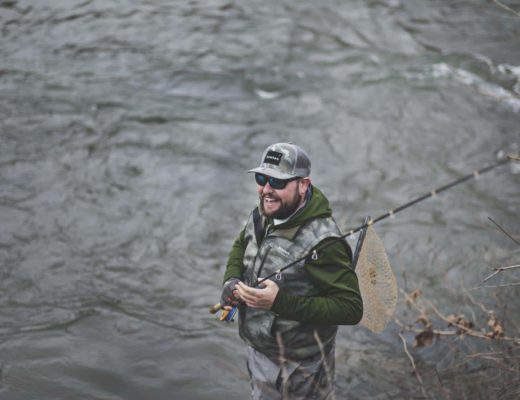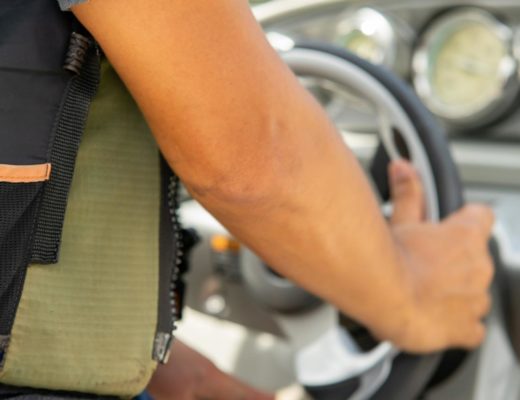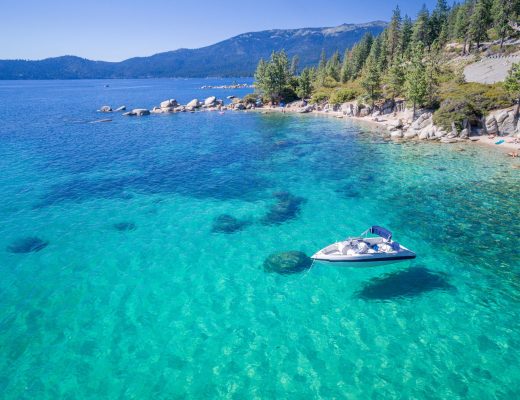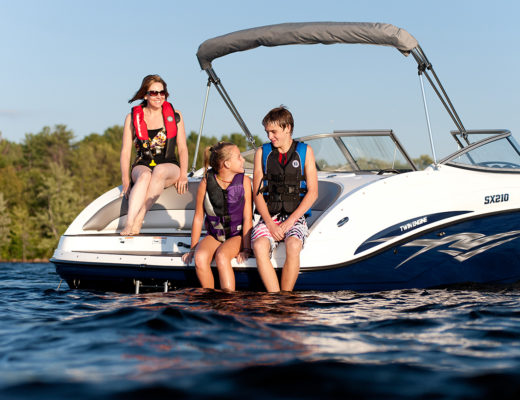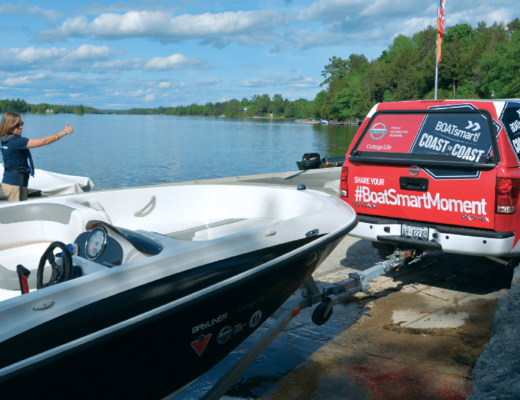Responsible boaters know that they risk polluting the marine environment. For this reason, boaters must follow both the federal and state laws that are in place to protect the marine environment and keep the waters clean.
Unfortunately, the amount of garbage in U.S. waterways is increasing. Floating garbage damages your boat and is extremely harmful to the species living in the marine environment.
It is against federal law to pollute the waterways. As a result, the minimum consequence for polluting is a fine and, in some states, imprisonment.
Today we talk about how boaters can help protect the marine environment (while boating safely) so we can all enjoy many more days on the water!

Litter Laws for Boaters
Federal law prohibits the release of waste matter of any kind into U.S. waters. This includes trash, garbage, oil, and other liquid pollutants. In addition, these rules apply to all boat types and depend on how far your boat is from shore.
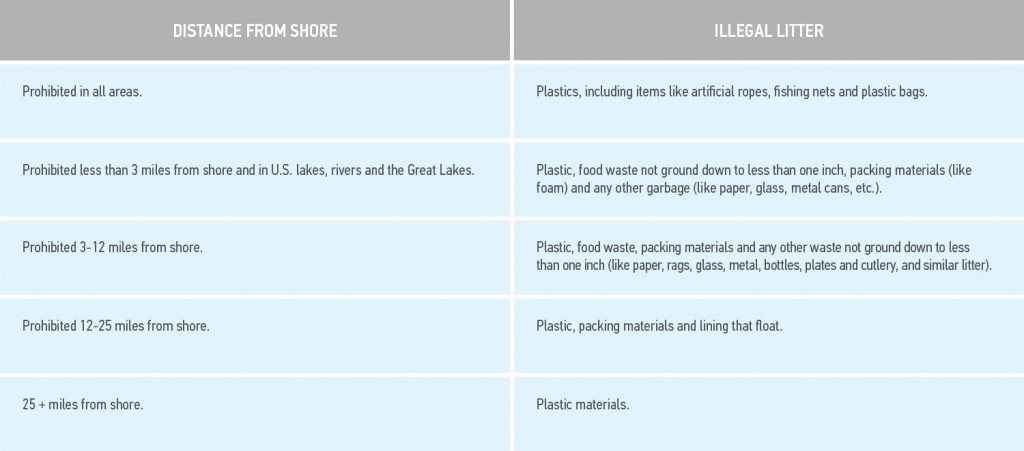
Note: It’s always illegal to dump plastic into the water.
The Disposal of Toxic Substances
The Federal Water Pollution Control Act prohibits the discharge of oil or hazardous substances into U.S. waterways.
As a result, all boats with fuel-powered engines must keep oils or toxic waste on board the boat. The operator must keep the hazardous waste in a fixed or portable container and dispose of it at a proper reception facility. Oil discharge builds up easily in a boat’s bilge and subsequently discharges into the water. Therefore, hazardous substances should always be handled with extreme care.
Boaters should have one of the following devices on board to safely contain hazardous substances and prevent them from spilling into the marine environment:
- A bucket or
- Oil absorbent pads or
- A heavy-duty plastic bag or
- A bailer or portable pump
Reporting Spills and the Illegal Discharge of Waste
Boaters must report to the authorities if a pollutant (such as oil or hazardous cleaning products) is released from your boat into the water. Call the U.S. Coast Guard toll-free at 1-800-424-8802.
Be prepared to report the following information to the National Response Center:
- The location of the release
- The source and cause of the release (if one is known)
- The amount of waste released (an estimate)
- A description of the waste (color, odor, consistency, etc.)
- The actual substance that was released (if known)
- The date and time of the release
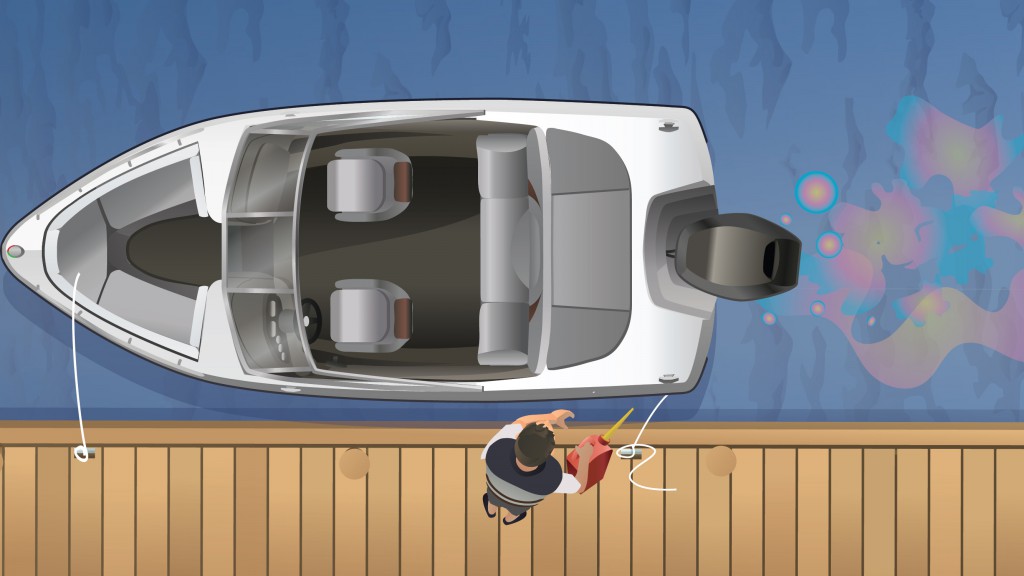
What Are the Penalties for the Improper Disposal of Toxic Substances?
If found guilty of discharging toxic substances from your boat, you may face a civil penalty of up to $125,000. Additionally, you may face criminal penalties when failing to notify the Coast Guard of an illegal discharge.
This could include a prison sentence of up to five years.
Required Signage for Some Boats
While this won’t apply to all boats, the length of your boat may require you to display the following signage on board.
Oil Placard
Boats over 26 feet long that operate on federal waters must have an Oil Placard on display. Additionally, the placard must be visible so that passengers can reference the oil discharge laws.
The Oil Placard must be at least 5×8 inches in size and must display the following message: “Discharge of Oil Prohibited”
The Federal Water Pollution Control Act prohibits the discharge of oil or oily waste in any navigable waters of the U.S. This prohibition includes any discharge that causes a film or discoloration to the water’s surface. Additionally, it includes any discharge that causes a sludge or emulsion under the surface of the water. Violators are subject to civil and criminal sanctions, including fines and imprisonment.
Garbage Disposal Placard
If your boat is over 26 feet long and operates on federal waters, you must also display a Garbage Disposal Placard or “Save Our Seas” placard. These placards must be at least 4×9 inches in size and describe the rules for discarding waste offshore.
Waste Management Plans
Your boat must have a Waste Management Plan if it is:
- Over 40 feet in length
- Has sleeping and/or cooking compartments and
- Meant to be operated more than 3 miles away from shore
The information on the waste management plan must include the boat’s name and port as well as the procedures for the disposal of:
- Food waste
- Cans, bottles, and plastics
- Sewage and other dangerous substances

Onboard Toilets
In addition to safety equipment, some recreational boats may have a toilet installed on board. However, it’s illegal for raw sewage to escape into territorial U.S. waterways when you’re boating within three miles of shore.
The Clean Water Act requires all boats with installed toilets to be equipped with a Coast Guard-approved Marine Sanitation Device (MSD). An MSD system is designed to retain, treat, and/or release sewage from recreational boats.
Note: Swimmers can catch serious bacterial infections if they are exposed to raw sewage.
MSD Types
Boats can be equipped with one of several types of MSDs, including:
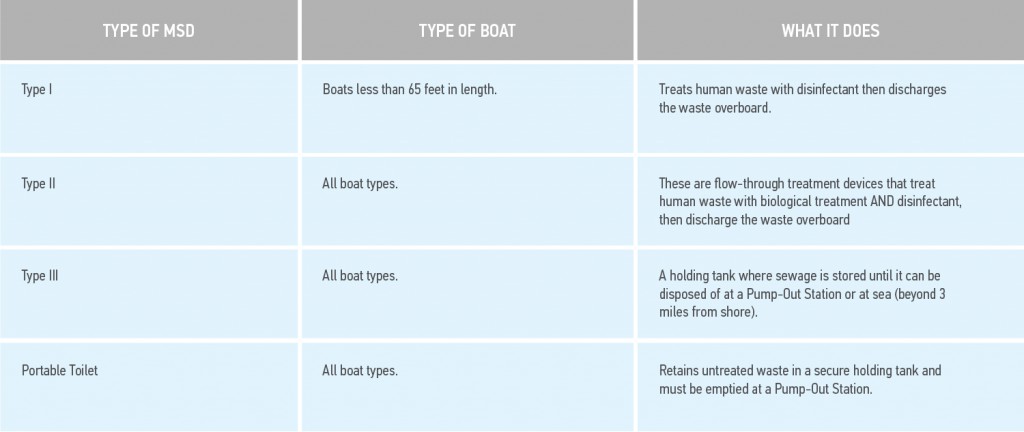
“No Discharge Zones” include land-locked waterways, drinking intake areas, and an environmental fragile marine habitat.
In these areas, Type I and Type II MSDs must not be used. Additionally, they must be secured to prevent accidental release. Type I and Type II MSDs are the types that discharge treated waste into the water.
How to Secure and Empty Your MSD
It’s simple, but crucial, to follow these steps to secure an MSD in your boat to avoid discharge.
- Padlock the overboard discharge valves in the closed position.
- Close the overboard discharge valves and remove the handle.
- Lock the door to the space where the toilet is kept.
When you’re ready to empty an MSD, look for a pump-out station to dispose of the contents appropriately. If a marina has a Pump-Out Facility for your MSD, there will be a clearly visible sign to identify the Pump-Out Station.
Aquatic Nuisance Species
The American marine environment is under threat from foreign aquatic plants, fish, and invertebrates. Aquatic Nuisance Species (ANS) are transferred to waterways from boats or boating equipment originating from external waterways.
The ANS will detach from the contaminated boat or equipment once it is introduced to a new waterway, causing it to spread. ANS include Milfoil, Zebra Mussels, and Quagga Mussels.
Why Are ANS Such a Serious Threat?
These animals are a threat to the marine environment for several key reasons, including:
- They have no natural predators in U.S. waters
- Some ANS can actually survive out of water, making transfer easy
- They reproduce quickly
- They have harmful effects on the native wildlife, habitats and ecosystems
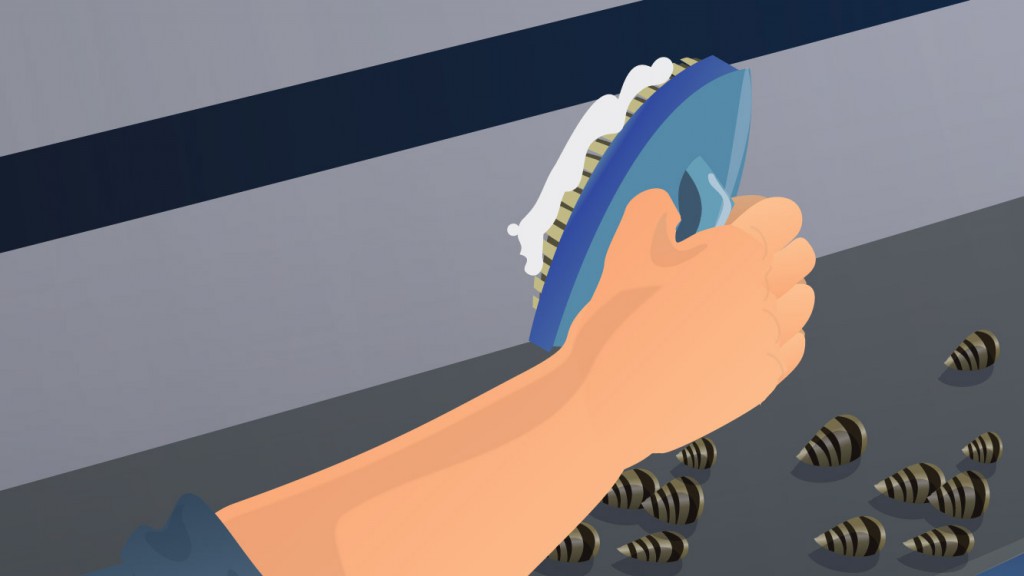
How Do I Prevent the Spread of ANS?
You can help prevent the spread of these dangerous animals with a few simple tasks. These include:
- Rinse your boat with environmentally friendly soap and hot tap water (at least 104°F).
- Spray your boat with high-pressure water (250 psi).
- Feel the hull for gritty surfaces. Rub down these areas with towels, spray again with hot water, and dispose of the towels in the garbage.
- Clean anchors, live wells, buckets, and other items that were in the water or held water. Do this away from the shoreline, and never release live bait from one body of water to another.
- Dry your boat and equipment before moving it to another body of water.
For more information on Aquatic Nuisance Species, visit the Stop Aquatic Hitchhikers website.
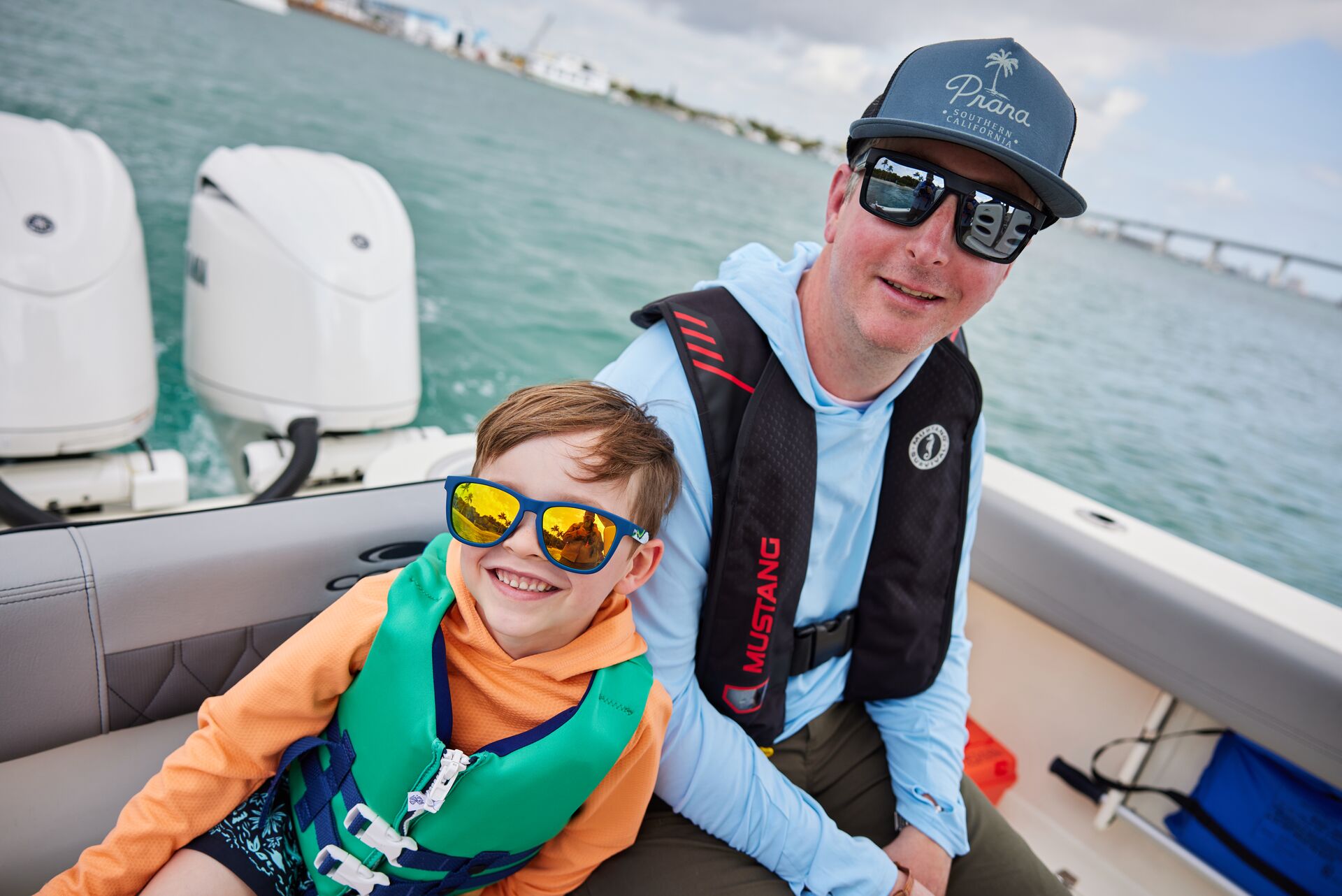
Boat Safely While Protecting the Marine Environment
Being a responsible boat owner and following these tips for waste disposal and preventing the spread of ANS helps protect the marine environment so more people can continue enjoying it for many years to come!
However, every time you launch your boat, it’s also important to prioritize safety. At BOATsmart!, we’re committed to provide the boating safety education you need to stay safe on the water and respect and care for the environment.
Our online courses are fun and engaging to help you retain more information that can save lives on the water! In the U.S., choose the course for your state and start learning. In Canada, our Transport Canada-approved course if the way to go!
Originally published in March 2020. Content most recently reviewed and updated for accuracy and relevancy September 13, 2024.
